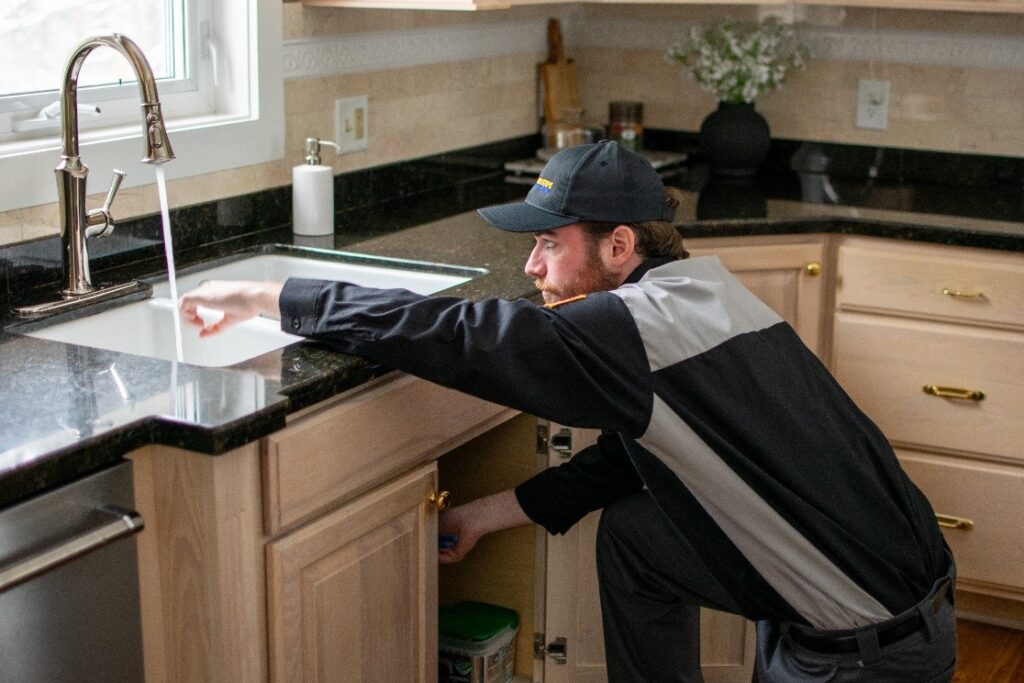The home’s plumbing system has a lifetime during its functions at an optimum level. Once the time has reached, the plumbing functionality decreases and becomes damaged. All the plumbing features have their average lifespan, and if you want to avoid an unavoidable emergency, you need to know about those life expectancies.
Nobody wants to think of having to spend much money on renovations, but it’s best to know what you’re dealing with before issues arise. It’s not just about leaks; it’s also about the aging process and the pieces that may need to be replaced over time. Many people do not see this as a quality of life issue until a calamity forces them.
The life expectancy is normally affected by weather, usage, maintenance, and quality of the items. When you feel your pipes are outdated and have frequent leaks, we suggest you call Edwin Stipe HVAC & Plumbing Co. for the best plumbing services and timely replacements.
Here we give you an idea about how long your home’s plumbing needs to last:
Know Your Pipes
Knowing the type of plumbing in your space makes a huge difference in knowing how long you can expect it to work without compromise. Your home’s warranties and documents or inspection report will give you an idea about the types of home’s plumbing system it was installed.
Further, you can hire professionals from Edwin Stipe HVAC & Plumbing for a complete inspection of the plumbing system to get the right status of its viability. The pipes made of iron, brass, or steel can have a lifespan of 50-70 years on average, whereas copper can last for 70-80 or more years. On the other hand, PVC piping has a comparatively shorter lifespan of fewer than 50 years.
Drainage Lines
Drain pipes are usually made of PVC or cast iron. The pipes made of cast iron are likely to be found in older buildings and can last for 75-100 years. The PVC lines are mostly found in relatively new structures.
PVC pipes consist of larger diameter and can last a lifetime if properly used for drainage systems. Some of the time, PVC pipes are used in supply lines, in which case they last for 75 years.
Toilets
A malfunctioning toilet can be a major problem. Toilets can last for 50 years, but that does not mean all its internal components. The operation of the toilet seems fairly simple, but it does contain a dozen moving parts.
The smaller components like the fill valve or handle need some plumbing touch-ups or replacements once in a while.
Faucets and Sinks
When thinking about your home’s plumbing lifespan, you need to consider replacing faucets for at least 8 to 10 years. If the model you consider is outdated, it might not have all the safety mechanisms that newer models do.
When we turn the older faucets, they tend to take more time to shut off because they are less sophisticated than the new ones, and they do not have power-saving devices and aerators.
Water Heaters
The older water heaters are prone to wear and tear and leaks because of their poor design and age. These models tend to leak so easily at all operating pressures, whether it is rusting or cracking.
If you replace a water heater every 7 to 10 years, it is a good practice, but pay attention to the manufacturer’s instructions when you go for a replacement. The average lifespan of a water heater tends to be 10 to 15 years.
Here, the good news is that most modern heaters are guaranteed against defects and leaks for life.
If you are remodeling or building your first home or the tenth, these rules stand constant for your home’s plumbing. If you want any part of your home’s plumbing inspected or fixed, contact us or visit Edwin Stipe HVAC & Plumbing to schedule an appointment!









